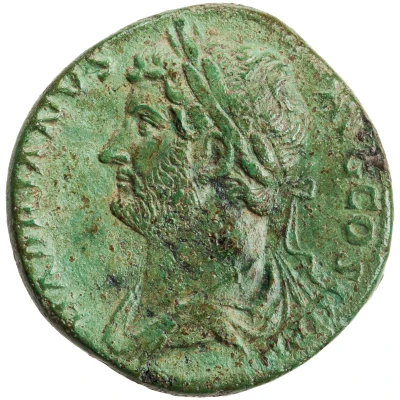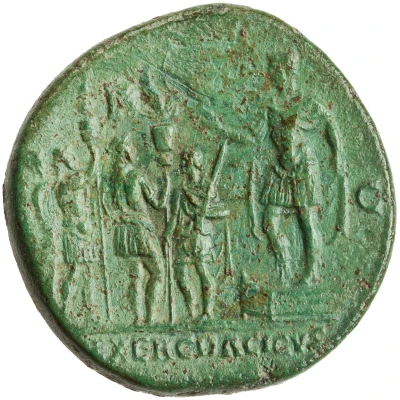Sestertius - Hadrian EXERCITVS DACICVS S C
| Orichalcum | 25 g | 32.5 mm |
| Issuer | Rome › Roman Empire (27 BC - 395 AD) |
|---|---|
| Emperor | Hadrian (Publius Aelius Hadrianus) (117-138) |
| Type | Standard circulation coin |
| Years | 130-133 |
| Value | 1 Sestertius = ¼ Denarius |
| Currency | Denarius, Reform of Augustus (27 BC – AD 215) |
| Composition | Orichalcum |
| Weight | 25 g |
| Diameter | 32.5 mm |
| Shape | Round (irregular) |
| Technique | Hammered |
| Demonetized | Yes |
| Updated | 2024-10-06 |
| Numista | N#256414 |
|---|---|
| Rarity index | 100% |
Reverse
Hadrian riding right, raising hand; before him, a crowd of three soldiers with standards.
Script: Latin
Lettering:
EXERCITVS
DACICVS
S C
Translation:
Exercitus Dacicus. Senatus Consultum.
Army of Dacia. Decree of the senate.
Comment
Source: Online Coins of the Roman Empire (OCRE)Interesting fact
The Sestertius coin , which features Emperor Hadrian and the inscription "EXERCITVS DACICVS S C," is notable for its use of the metal Orichalcum. Orichalcum was a type of brass alloy that was used in the production of some Roman coins during the 2nd and 3rd centuries AD. It was prized for its durability and resistance to corrosion, and was often used to produce coins that were meant to be used in trade and commerce. The use of Orichalcum in the production of this coin speaks to the advanced metallurgical techniques and technologies that were developed by the ancient Romans.

